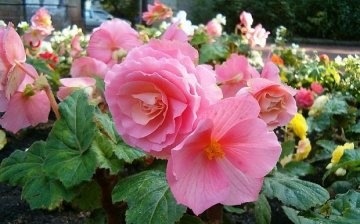Tuberous begonia planting: planting and care features
For many flower growers, especially the feminine, begonia is their favorite flower. There are many different types of begonias, among which tuberous begonia deserves special attention.
Tuberous begonia, which can be planted in several ways, is especially popular among gardeners, since most often these flowers are used to decorate balconies, flower beds and flower beds. Tuberous begonia planting is possible in several ways - by seeds, leaves and stem cuttings. The breeding method of begonias depends on the type of plant itself.
The most difficult is the method of sowing begonias with seeds. Sow begonia seeds into leafy ground, without sprinkling with a layer of earth. Begonia seeds are very small and fragile, so they can be easily squeezed into the soil. Seeds are sown in February-March, and begonia can give the first shoots in two weeks. The difficulty of this method is that quite often, due to unsuitable soil, the seeds do not germinate, and even if they have disappeared, the tubers of the plant are formed only by next winter.
In the fall, the begonia tubers must be cut from the leaves and cleaned from the ground. Begonia tubers are placed in peat or sand and make sure that the tubers do not dry out during storage. The optimum temperature for them is + 8-10 degrees. the tubers stored in this way are also planted in February-March. Begonia tubers are planted in the sandy ground. Watering the plant is necessary as the earth dries up, and small pots should be chosen. Tuberous begonia grows slowly, so carefully monitor the growth of roots and stems, if new ones appear, then the begonia has taken root.



